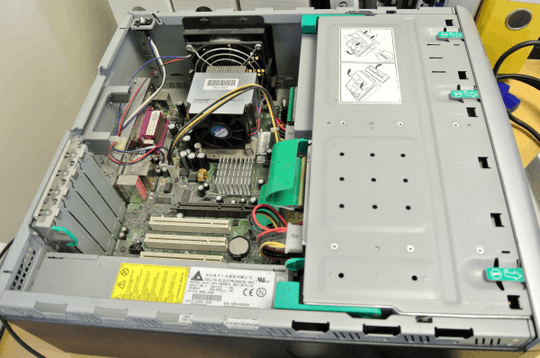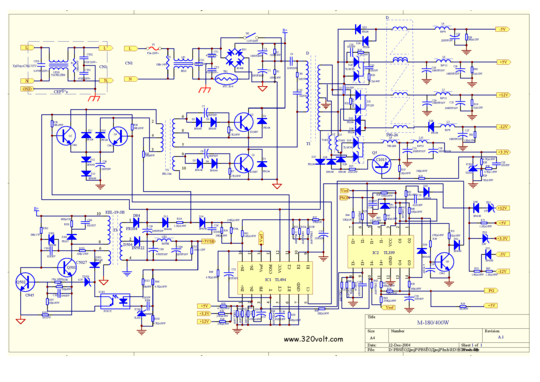Strictly no, in practice definitely yes: yes you can power up the motherboard outside of its case, or just forget the case altogether and harvest the power supply. You can happily run such a system with all of your components on the desk/shelf/whatever, great way to have an "extra" PC around in plain site that doesn't look like your typical PC.
But to explain the strictly no, having exposed components around makes it easier to short some circuits, or just get dirty faster, or collect spilled coffee etc... You probably don't want to drill some holes in metal over the motherboard, little metal filings going everywhere won't be good for that. Once you get used to having the mobo in the open, you tend to not notice these little mistakes until its too late.
The power supply connection(s) provide the ground to the mobo, not the case. The case just happens to physically touch the power supply's case, which is grounded, and thus the case gets ground as well.



5Some people even "glue" all their components to walls and let it run there :D – Ray – 2014-06-19T08:36:28.003
@PacMani: I've seen a shoebox install. Lots of glue! – dotancohen – 2014-06-19T08:48:36.337
someone even mounted it inside an old toilet :P – Ray – 2014-06-19T10:46:14.477
18Not only is it safe, assuming you follow the precautions listed in the answers below, it's in fact a good practice for new builds. Fully connecting all motherboard components outside the case and powering them on will quickly identify any components that might have been DOA. Once you've checked that the system boots, then you can install it into the case. – Lilienthal – 2014-06-19T11:47:58.340
My past 2 desktops have been bare motherboards sitting in a cardboard box. – Yuji Tomita – 2014-06-19T23:50:28.330
1As everyone else has said, no worries other than the usual. I've done it 100's of times. I/Others have cases made of plastic that don't provide grounding. Even then, metal cases are never grounded to anything. – user1596244 – 2014-06-20T11:51:14.967
4as @user1596244 said, metal cases are not grounded. The grounding of the Motherboard is provided by the PSU, which is of course grounded to the power grid. – iFreilicht – 2014-06-20T12:21:53.867
6Make sure to mount a cooling system even on your temporary CPU, otherwise it would become too hot very fast. – Gras Double – 2014-06-20T22:22:32.327
1@Lilienthal I wouldn't call this good practice. DOA parts are rare, if all works you are wasting a lot of time doing it twice for the exception. Also unmounted you are much more likely to cause damage through flexing the motherboard or shorting something out. – JamesRyan – 2014-06-23T11:26:31.733
Don't set the MB on the case, regardless what it is made of. Plastic cases may be coated with conductive paint. The purpose is to form a Faraday Shield to stop RF interference. The case might also be tied in to ground but usually is not as the shielding effect doesn't require it.
– DocSalvager – 2014-06-25T21:41:05.817@user1596244: You will find that the metal case of a typical PC is most definitely connected to mobo ground and to PSU ground... assuming you've installed everything properly . Check it out with a DMM set on "ohms" if you don't believe this. – Jamie Hanrahan – 2014-08-06T04:46:04.107
I know and understand it. It just typically not the best ground in the system, I would much rather rely on the 24-pin ground than the one provided by 4 case screws holding the PSU in place. – user1596244 – 2014-08-06T11:17:27.037